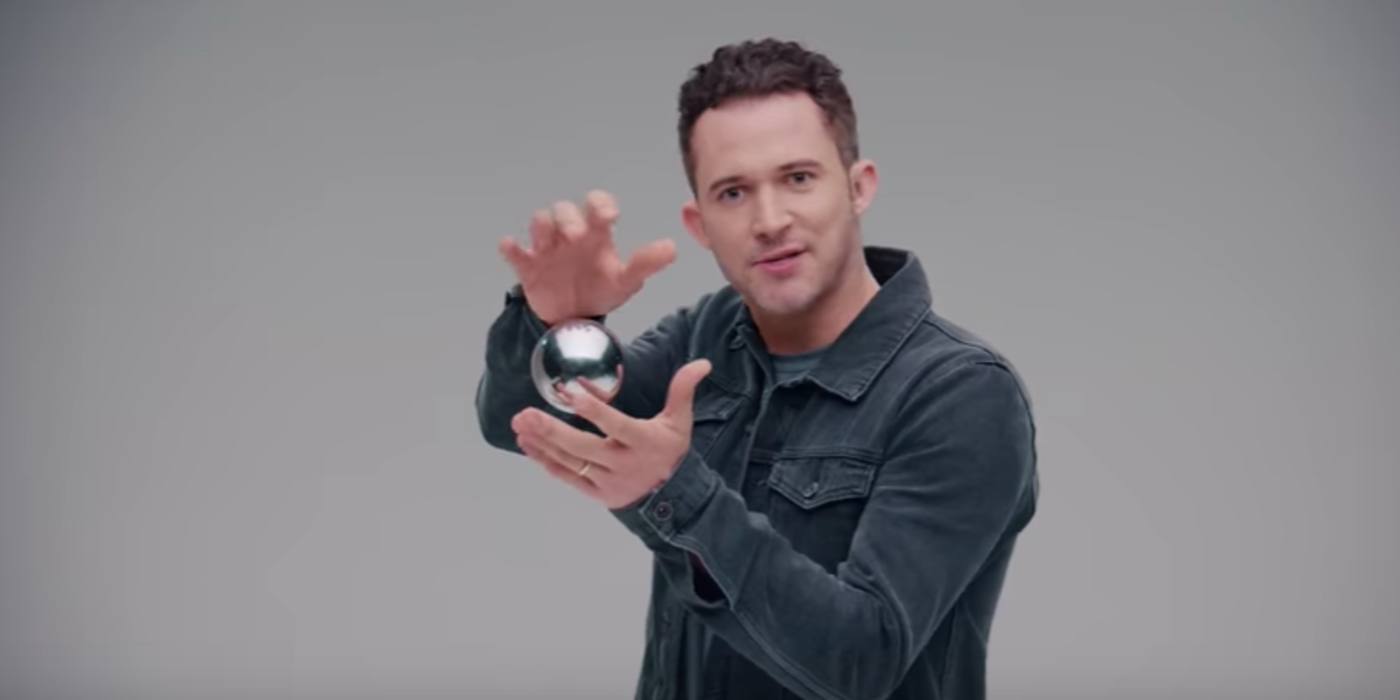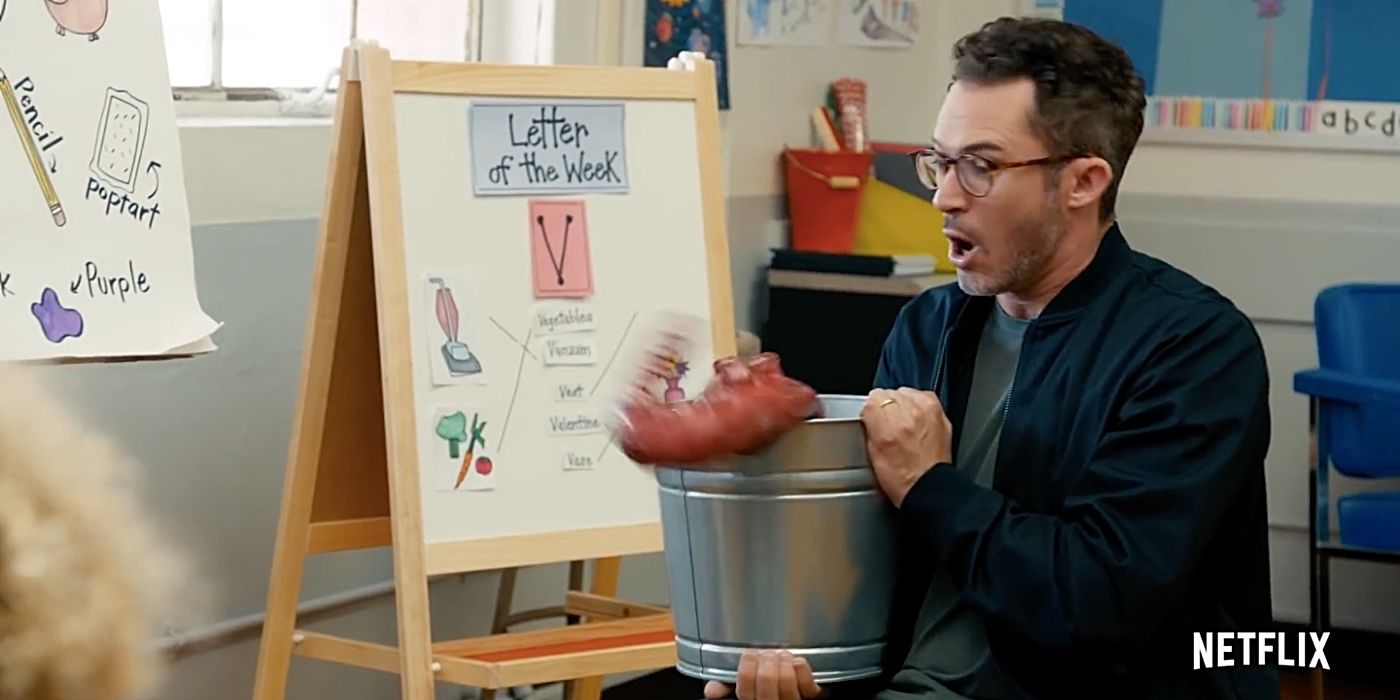Combining street magic and magical social experiments, good-natured magician, comedian and television host Justin Willman returns to Netflix with season 3 of Magic for Humans. The newest season, featuring seven episodes, appeared on Netflix on May 15. In the series, Willman, who spent his life mastering the art of magic, seeks to "use magic to master the art of being human." He claims that the tricks and illusions shown in the series are not enhanced by camera or editing tricks.
In episode 1 of season 3, entitled "Power Trip," Willman opens the show by using a power washer at a self-service car wash to levitate, but the overall theme of the episode is to show the power of the human brain and unlock its full potential. Dressed as a psuedo-Steve Jobs, Willman ventures into the streets with a Doc Brown-like helmet and asks three unsuspecting subjects to wear the helmet, while completing a brain-twisting challenge, such as solving a Rubik's Cube behind their back, blindly guessing the random time on a wristwatch, or perfectly reciting the transcendental number Pi to 35 decimal points. To their own individual astonishment, each person succeeds in their challenge. Next, Willman visits a middle school to show children the power of positive and negative words. Because human beings are affected by words and human beings are made up of 70% water, he wonders if water too can be affected by positive or negative feedback. With the power of compliments, he gets water to unbelievably stay in an upside-down glass, and then with a bit of bullying the water immediately splashes out. As all the kids believe that words have power, except for one, he further tests his theory, attempting to convince the child by getting a seed to instantly grow into a flower within seconds of planting it in dirt all by saying something nice. In his next experiment, Willman dons a lab coat to conduct a 'scientific' examine that appears to be a legitimate psychological study, but as he says is just "magic and bs." His subjects don't even flinch when explains that the experiment tests the Constanzian Effect and the Seinfeldian Effect. Here, he gives each subject a fake left arm and hides their real one behind a divider. Then, he begins to touch the fake hand with ice, fire, pushpins, and even a hammer to which the people react as if their actual hands are actually being seriously harmed. However, when he pushes the pin into a male subject's actual hidden hand, the subject does not feel it at all.
In his final experiment of the episode, Willman meets with three popular influencers at a pop-up museum, under the guise of having them help him with his social media presence. As the influencers all believe that they are less susceptible to be influenced because of their experience and tricks of the trade, unbeknownst to them, Willman seeks to show them they are mistaken. After having them scroll through and analyze his social media pictures, he asks each to choose a variety from 50 not-so glamorous items and take hundreds of selfies around the pop-up museum. When time is up, he instructs them to pick one photo and hashstag and to post it at the exact same time. Surprisingly, the photo posted by each is almost identical: an ice tray as a smile, while sitting on a watermelon swing, identified with "#traycool." On top of that, Willman reveals that he came to the museum a week earlier and took the exact same photo himself. Most interestingly, in a style similar to the final twist of The Usual Suspects, Willman unfolds how he influenced the influencers through the words and images he presented, when showing off his not-so spectacular Instagram feed. In doing so, he made references to watermelon, Gallagher, Vanilla Ice, food trays, swing-sets, etc., all to influence their decisions. Whether it is social media influencers, middle schoolers, or everyday people, Willman's underlying point in the episode is to show that our "thoughts, words, and actions all have power, so we should be careful how we use them."
Born in St. Louis, Missouri, Willman began performing magic at age 12 - after breaking both of his arms - when his orthopedic surgeon recommended card tricks as an alternative form of physical therapy. His quest for dexterity in his hands soon led to a love of magic and to performing at birthday parties and eventually to a career as a magician, comedian, and TV host. Beyond Magic for Humans, he is best known for hosting Food Network hits like Cupcake Wars, Halloween Wars, and King of Cones, as well as the revival of Win, Lose or Draw on Disney Channel.
The original, six-episode first season of Magic for Humans was released on Netflix on August 17, 2018, and was followed by the second season on December 4, 2019. In subsequent episodes in season three, Willman investigates and unveils topics such as vices, fear, home, traditions, and self care.
Source: Netflix


